Wayne Stewart was born and raised in Donora, Pennsylvania, a town that has produced several big-league baseball players, including Stan Musial and the father-son Griffeys. Stewart now lives in Amherst, Ohio, and is married to Nancy (Panich) Stewart.
He has covered the sports world as a writer for more than 40 years, beginning in 1978. He has interviewed and profiled many stars including Kareem Abdul-Jabbar and Larry Bird as well as numerous baseball legends such as Nolan Ryan, Bob Gibson, Tony Gwynn, Greg Maddux, Rickey Henderson, and Ken Griffey Jr.
In addition, Stewart has written more than 20 baseball books and a handful of other books on football and basketball. His works have also appeared in seven baseball anthologies. This is his 37th book.
Stewart has also written over 500 articles for publications such as Baseball Digest, USA Today/Baseball Weekly, Boys Life, and Beckett Publications and has written for the official publications of many Major League Baseball teams including the Braves, Yankees, White Sox, Orioles, Padres, Twins, Phillies, Red Sox, As, and Dodgers.
Furthermore, Stewart has appeared, as a baseball expert/historian, on Clevelands Fox 8, on an ESPN Classic television show on Bob Feller, and on numerous radio shows. He also hosted his own radio shows including a call-in sports talk show, a pregame Indians report, and pregame shows for Notre Dame football.

the
FOOTBALL
BOOK of
WHY
(AND WHO, WHAT, WHERE, WHEN & HOW)
also by the author
All the Moves I Had: A Football Life (with Raymond Berry)
Americas Football Factory: Western Pennsylvanias Cradle of Quarterbacks from Johnny Unitas to Joe Montana
Remembering the Greatest Coaches and Games of the NFL Glory Years: An Inside Look at the Golden Age of Football
Remembering the Stars of the NFL Glory Years: An Inside Look at the Golden Age of Football
Youre the Ref: 174 Scenarios to Test Your Football Knowledge
To my family: wife Nancy, sons Sean and Scott, daughters-in-law Rachel and Katie, and my grandson Nathan.
Also to my cousin Dale Stewart, a rugged fullback out of Carnegie Tech who was as comfortable with his artists palette as he was with the pigskin.

An imprint of Globe Pequot, the trade division of
The Rowman & Littlefield Publishing Group, Inc.
4501 Forbes Blvd., Ste. 200
Lanham, MD 20706
www.rowman.com
Distributed by NATIONAL BOOK NETWORK
Copyright 2022 by Wayne Stewart
All rights reserved. No part of this book may be reproduced in any form or by any electronic or mechanical means, including information storage and retrieval systems, without written permission from the publisher, except by a reviewer who may quote passages in a review.
Library of Congress Cataloging-in-Publication Data available
ISBN 978-1-4930-6857-9 (paper : alk. paper)
ISBN 978-1-4930-6858-6 (electronic)
 The paper used in this publication meets the minimum requirements of American National Standard for Information SciencesPermanence of Paper for Printed Library Materials, ANSI/NISO Z39.48-1992.
The paper used in this publication meets the minimum requirements of American National Standard for Information SciencesPermanence of Paper for Printed Library Materials, ANSI/NISO Z39.48-1992.
Contents
Guide
Any beginning journalist knows that every story he works on should, when applicable and not irrelevant to the story, contain the answers to the questions readers are most curious about. These all-important questions are known as the five Ws and an Hwho, what, when, where, why, and how.
To gain a full and rich understanding of football, those questions are, of course, vital. Fans, even ardent ones, may know all of their favorite players statistics and all of the major records set by the games greats, yet lack knowledge about some other points.
This book provides a slew of questions and in-depth answers concerning the rules, records, and history of the NFL, and much more. From the early days of football to the popular game seen today, theres a good chance that this book answers questions every fan has pondered. Whether the topic is quarterbacks or coaches, famous firsts or memorable moments, if a who, what, when, where, why, or how question is on your mind, this is the book for you.
While the primary emphasis here is on pro football, some questions pertain to the college game. Also, unless otherwise noted, all of the statistics, records, and feats mentioned in the book are through the 2021 season.
The game of football has undertaken quite an evolutionary ride, one deserving of study. So, sit back, relax, and get ready to be entertained, informed, and even surprised by the facts which follow.
As touched upon in the introduction, modern fans often are lacking when it comes to their knowledge of the roots of football. How did football gets its start? What are its roots? Where did those roots first take hold?
If you happen to be one of those fans who isnt savvy about those early days, and you find such ancient history to be boring, you can either skim through this chapter or skip it entirely. However, if you skip the chapter, youll miss out on some odd, fascinating, and entertaining items such as the following: some rules which now seem bizarre at best; a champion that wasnt, by later standards, really the champ; and a title game which was played on a field which measured just 60 yards long.
Just as baseball can trace its beginnings back to England and a game called rounders, football evolved from the game of rugby, a sport which also originated in England.
In the United States, the first college game of soccer football took place in 1869 when Rutgers and Princeton squared off on November 6. That contest employed modified London Football Associated rules. Over the next seven years rugby became quite popular, surpassing soccer in popularity, especially with major colleges in the East.
From there, the next logical evolutionary step was for modern football to modify rugby, resulting in football becoming its own sport with its own rules, strategies, and intricacies.
However, there are many more facets which went into the early days of football. This chapter explores those roots, including the pioneers of the sport, the early rules of the game, and more.
ALL SPORTS REQUIRE CLEAR-CUT RULES, EVEN THOUGH THE EARLIEST ONES MAY HAVE VARIED A BIT DEPENDING UPON SOME FACTORS SUCH AS GEOGRAPHY. ALSO, MANY OF THOSE RULES BECAME OUTDATED, EVEN OBSOLETE, OVER THE YEARS. NEVERTHELESS, A KEY QUESTION IS THIS: WHO WROTE UP THE FIRST RULES FOR AMERICAN FOOTBALL AND WHEN?

Walter Camp, now known as the father of American football, created many rules and changes to the sport in its early stages. In 1876, rules were drawn up at the Massasoit convention. Over a stretch of 15 years, Camp continued to meet with various athletic directors of colleges to refine the games rules.
Before Camp, college ball was not unlike what one source called the medieval European sport of mob football. In fact, Camp was a star running back at Yale, a school which had once banned the brutal sport (when Camp was an infant). Furthermore, before Camp, every college team played under their own set of rules.





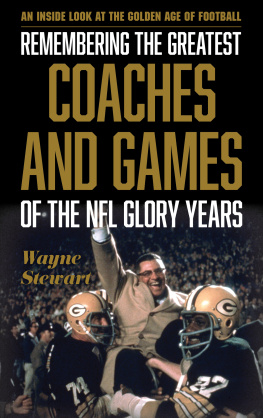


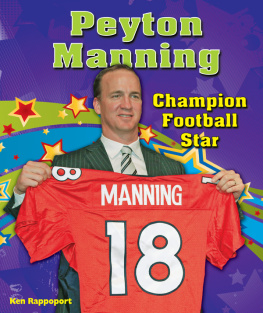
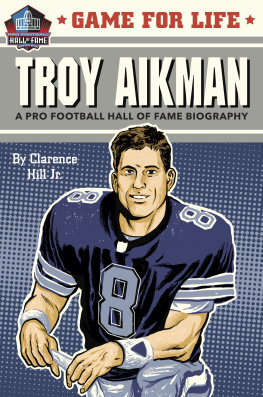

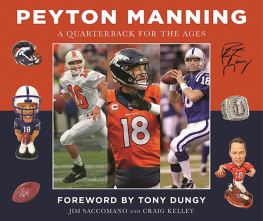
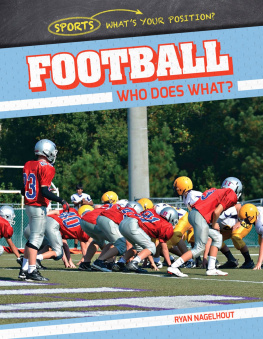
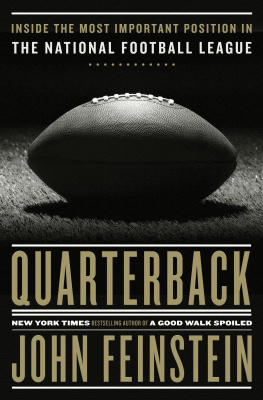
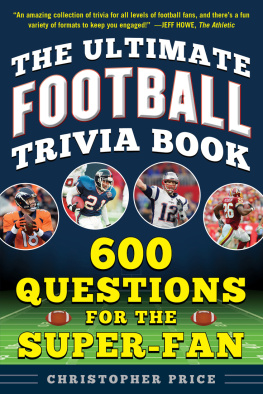


 The paper used in this publication meets the minimum requirements of American National Standard for Information SciencesPermanence of Paper for Printed Library Materials, ANSI/NISO Z39.48-1992.
The paper used in this publication meets the minimum requirements of American National Standard for Information SciencesPermanence of Paper for Printed Library Materials, ANSI/NISO Z39.48-1992.